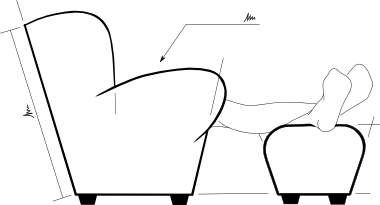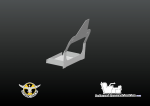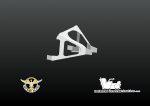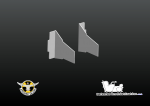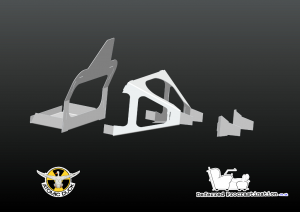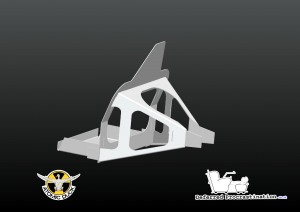Self-Jigging Chassis
One of the design criteria for Atomic Duck is: to be easily manufacturable, in a workshop with minimal specialist tools. As a result, the chassis parts are made from stock aluminium tube sizes and flat sheet. But the components construction is only part of the story, an Atomic Duck also needs to be manufactured without any specialist jigs, and without any welding.
To make sure that the wheels all point in the same direction, and all the angles are correct, vehicle assemblies are usually built up in a number of “jigs” that hold the parts in the correct relative positions untill they are connected together. Jigs themselves need to be constructed to a fine tolerance, to ensure the parts made in them are true.
For a builder who produces only one Atomic Duck, a set of jigs is an additional expense that will never be recouped, so Atomic Duck is designed to be self-jigging. This means that except for having a flat and level working surface, no additional structures are required to line the parts up and connect them together.
The rear wheel hanger assembly shows this really well. It consists of 4 parts: the rear bulkhead, which also incorporates the load floor for the luggage area; the rear axle hanger; and 2 stiffening plates that spread the load from the rear axle into the hanger. Note that the cut-outs for the axle mounting is not shown in these images – I still have to decide on the best dropout/fork-end selection.
While each of these parts look complex, they each are constructed by cutting aluminium sheet and bending it along straight lines. If these parts are laser cut, it is quite probable that the same workshop doing the cutting will have the capability to bend these parts into shape (using a brake press).
To ensure the alignment of the parts, and the correct angle of the bends, each part has one or more tangs (tabs) that fit slots in the part they connect to. These positively locate the parts in relation to each other, and stop them moving around while they are joined, while also providing an guide to the accuracy of the bends.
In case you’re wondering what the joining method is instead of welding: it will be structural epoxy adhesives. If this doesn’t sound very strong to you, take a look at the Lotus Elise chassis, which is constructed the same way. Bonding aluminium with structural adhesives is even good enough for the aerospace industry.
